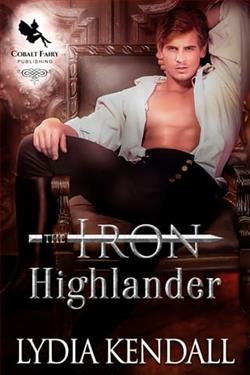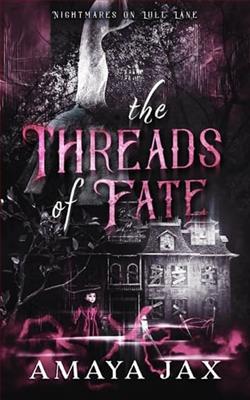Page 3 of The Naughty Professor
“June?”he tried again, louder.“Could you answer a—”
She raised her head slowly, eyes glinting like scalpels.“If you call me ‘June’ one more time,” she said evenly, “I will be forced to murder you.”
The boy’s face drained of color until he matched the lab coats hanging on the wall.He swallowed hard and slid into his chair without another word.
I cleared my throat and stepped to the front of the room, forcing myself into professor mode.
“Good morning, everyone,” I began.My voice came out steadier than I felt.“Today, we’re going to talk about one of my favorite topics: controlled exothermic chain reactions.”
Blank stares.
“Which is,” I added quickly, “how we make things go boom!on purpose without burning the building down.”
That earned a ripple of laughter.My shoulders loosened a notch.This was my zone.No matter how awkward I was at literally everything else, when I started explaining chemistry, the words just…flowed.
“Picture a line of dominoes,” I said, pacing a little.“Push the first one, and it knocks over the next, and the next, and so on.In chemistry, we call that a chain reaction.Controlled exothermic chain reactions are like dominoes where each falling tile releases energy—heat, light, gas—and, if you do it right, you get a predictable, contained outcome.”
I grabbed a marker and drew a quick diagram on the whiteboard: carbon molecules like little hexagons, arrows showing energy release, a cartoon explosion with a smiley face.
“Carbon, when bound in this configuration,” I tapped the drawing, “can release energy in a slow, steady burn, or,” I underlined another sketch, “in a sudden burst, depending on the catalyst we introduce.Today, I’m demonstrating how introducing a micro-stabilizer—that’s my term—lets us keep the energy under control.”
Now they were leaning forward.Phones down.Eyes on me.This—this was why I loved teaching.
“Questions before we start?”
Silence.Well, except for one student near the back who whispered, not nearly quietly enough, “Didn’t Dr.Sterling almost blow up the building doing this last year?”
My stomach dropped.I loosened my tie and felt sweat trickling down my side.Juniper smirked from her post by the fume hood, mouthing, twenty bucks at me.
“No explosions today,” I said brightly, even as my hands trembled.“We’re going to do this by the book.”
I moved to the lab table, laying out the components like a magician showing his props.“Step one: base compound.This is a carbon-rich polymer I synthesized this morning.Think of it as our dominoes.”
I measured a thick, blackish liquid into a beaker, the smell sharp and vaguely sweet, like burnt sugar and acetone.
“Step two: energizer.We’re going to introduce a measured amount of hyperoxide solution—don’t worry, it’s not as scary as it sounds—to prime the chain reaction.”
I poured a clear fluid from a stoppered bottle into the beaker, watching it swirl and shimmer.
“Step three: stabilizer.This,” I held up a tiny vial of pale blue crystals, “is my secret ingredient.It slows the reaction just enough to keep it safe.Without it, you get…well, last semester.”
A few students chuckled nervously.
“Finally,” I said, sliding on my goggles, “step four: ignition catalyst.This is where we give our dominoes their first push.”
I took a long breath, steadied my hands, and added the catalyst—a single drop of bright yellow liquid—into the mixture.
For a moment, nothing happened.The liquid stayed dark, silent.Relief fluttered in my chest.Maybe this time—
The beaker rumbled.
“Oh no,” I whispered.
Bubbles the size of marbles began to rise, the liquid turning a sickly green.A hiss escaped the beaker, followed by a low whoosh.
“Um,” I said to the class, “this is…normal.”
It wasn’t normal.















